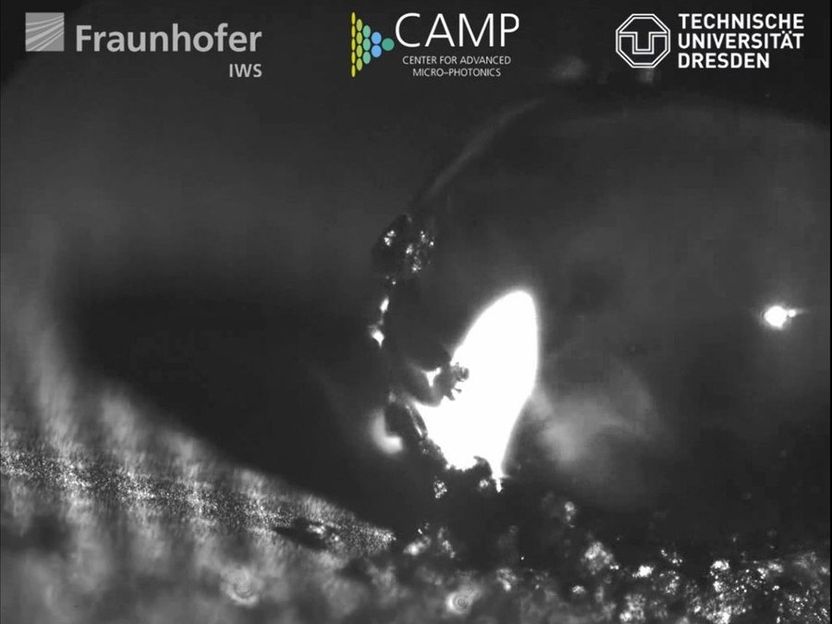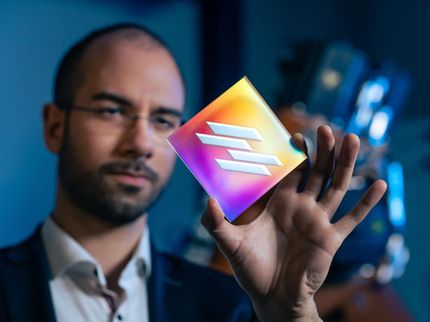Clean without scrubbing and using chemicals
Scientists develop self-cleaning aluminium surface
Advertisement
A project team of Technische Universität Dresden and the Fraunhofer Institute for Material and Beam Technology IWS structured an aluminium plate with a laser process in such a way that water droplets no longer adhere and dirt particles can be removed from the surface - completely without chemical cleaning agents or additional effort. The scientific evidence of the self-cleaning effect has been published in the journal "Applied Surface Science".

Water drops do not adhere to the self-cleaning aluminium surface. The latter has been functionalized by a team of “CAMP” scientists using direct laser interference patterning (DLIP).
Fraunhofer-Instituts für Werkstoff- und Strahltechnik IWS
For several years, scientists at TU Dresden and Fraunhofer IWS have been developing functionalised surfaces by means of laser-based manufacturing processes. Now, they have created a periodic surface structure that is not only water and ice repellent, but also remove dirt particles solely by rolling water drops. In this context, they particularly focussed on the material aluminium. “This material is used in many industrial branches – either in the automotive sector, aircraft construction or the food industry. The use of aggressive cleaning chemicals is particularly critical in food industry, as we naturally do not want to bring these chemicals in contact with our food,” emphasises Stephan Milles, PhD student at Technische Universität Dresden. In particular, the Dresden scientists studied the function of self-cleaning laser-structured aluminium. A special camera was used to analyse the self-cleaning effect of the aluminium surfaces and filmed the process at 12,500 frames per second. Thomas Kuntze, scientist in the Microtechnology Technology Field at Fraunhofer IWS, explains: “This way we can perfectly see how a water drop can remove the dirt from the aluminium surface. This method is also suitable for understanding other processes, such as laser cutting and welding or additive manufacturing”.
In close cooperation with Fraunhofer IWS, the Chair of Large Area Laser Based Surface Structuring at TU Dresden is operating the “Center for Advanced Micro Photonics” – CAMP. Prof. Lasagni explains: “We are currently working on several exciting projects with the goal of producing large-area fine-structured structures on metals, ceramics or polymers in the shortest possible time”. In these projects, the scientists are continuously developing further a technology known as “Direct Laser Interference Patterning”, which offers extraordinary properties compared to classical laser-based processes. Examples of such developments are applied in the “LAMPAS” and “SHARK” projects funded by the European Union. Here the scientists design laser sources and intelligent structuring processes to provide profitable solutions for surface functionalisation in various fields of application, such as automotive, food and home appliance industries.























































